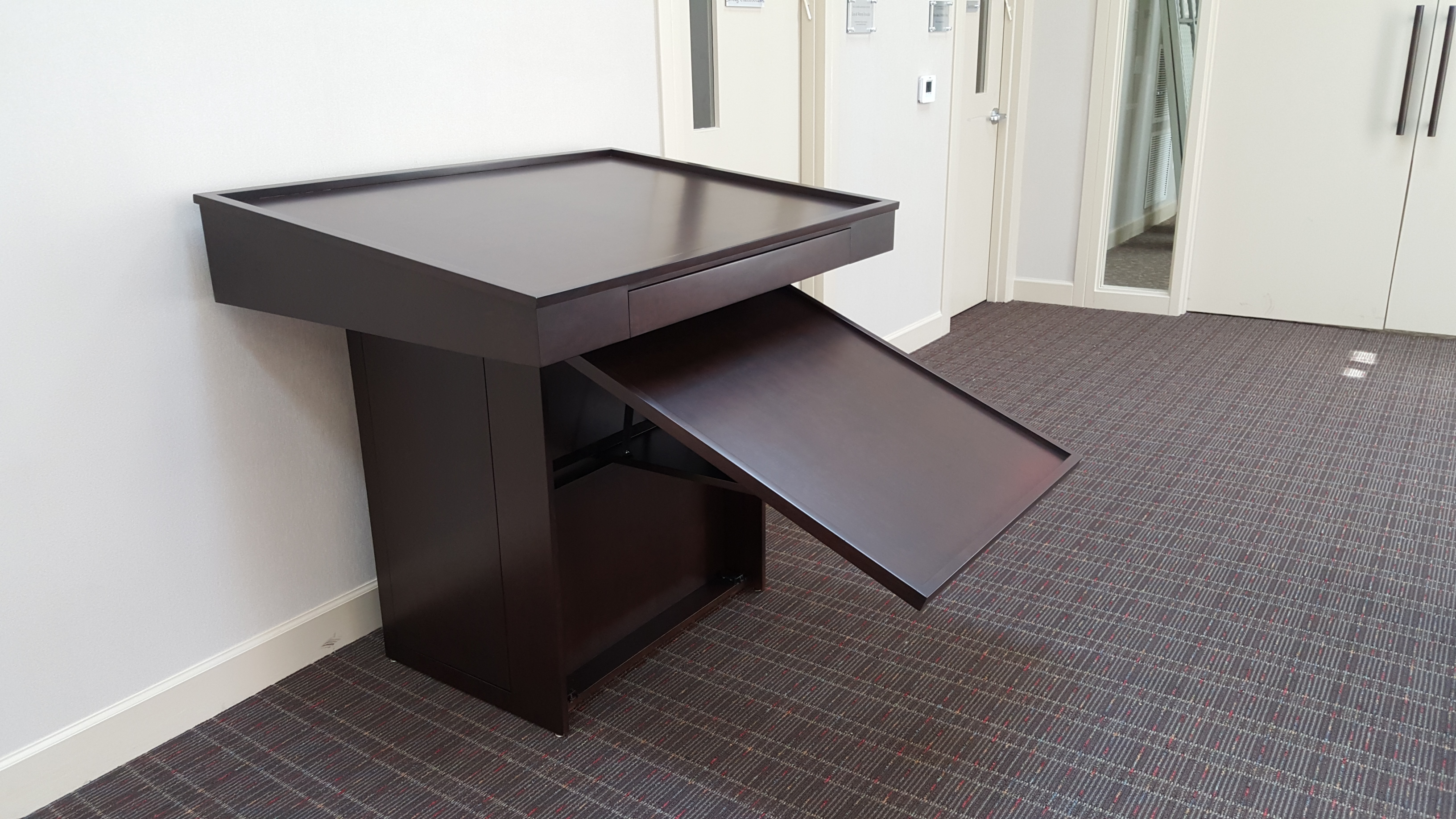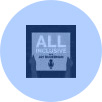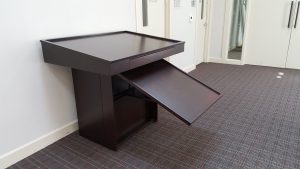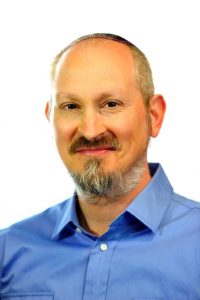
Chabad’s New Year Innovation: An Accessible Bimah
Chabad of Virginia recently installed an adjustable bimah that makes it possible for people who use wheelchairs to access the bimah. The bimah can be lowered to 30 inches from the ground. The Ruderman Family Foundation (RFF) interviewed Rabbi Yossel Kranz, Co-director of Chabad of Virginia, to learn more about the design and the inspiration.
The accessible bimah can be custom-made in any finish and size. For more information, email: info@rcii.org.
RFF: How did you decide to design an accessible bimah?
Rabbi: We are in the process of re-modeling the shul. I originally set out to design an old-school European style bimah. I spoke to my sister, Sarah Kranz-Ciment, director of the Ruderman Chabad Inclusion Initiative. She said to me, “what century are you living in?” and encouraged me to consider an accessible bimah. That forced me to re-think the design.
RFF: How did you go about designing the bimah?
Rabbi: I happen to be a little creative myself. I worked with my interior designer to develop it.
RFF: What were you trying to accomplish in the design?
Rabbi: Well, of course, it had to serve its purpose–to be accessible. So the bimah itself moves up and down. But beyond that we wanted to make it seamless, so it could be used in the natural course of the service and not be disruptive. Quick and simple. We wanted to make sure that when we include someone with a disability in the service, we do it in a way that doesn’t call too much attention to the accommodation. We want the person with the disability to be comfortable.
We also sought to make it aesthetically pleasing. People often associate inclusive practices and accommodations as necessarily unpleasing, but they don’t have to be. We designed a beautiful bimah.
RFF: Was the bimah design a major additional expense?
Rabbi: No, not at all. People often assume such changes are highly costly but it was not at all more costly than a conventional bimah.
RFF: How does the idea of an accessible bimah fit into the larger Chabad perspective?
Rabbi: Creating an inclusive environment is not at all revolutionary and is fully consistent with the larger Chabad approach. Our entire approach is to bring the world as close to perfection as possible, which means including everyone in what we do. We work, for example, to make Jewish life accessible to people with spiritual challenges. So making Jewish life more accessible to people with physical challenges is a natural extension of our approach. In many ways, a synagogue by its very nature must be inclusive. A non-inclusive synagogue is an oxymoron.
RFF: How can other synagogues follow suit?
Rabbi: Synagogues, particularly those in a re-modeling or building phase, can seek to make their building as inclusive as possible. So much thought and effort goes into the design and layout of our synagogues. We strive to make them less intimidating, more inviting, and user friendly. We include Hebrew/English prayer books, coffee bars, creative mechitzas, and whatever else we can think of, in an effort to insure that everybody feels welcome. All that is necessary for a synagogue to be truly inclusive is to remember that any one of those people might also be in a wheelchair.
Would they still be able to enjoy a cup of coffee? If it was child, would he or she have fun in the playground? Can the Mikvah accommodate a person who can’t use steps? Already keenly in tune with ensuring a comfortable, accommodating environment in every other way, there is no doubt in my mind that we would figure out how to do the same for people with physical disabilities as well.
About the author David Bernstein is a consultant and communications adviser to the Ruderman Family Foundation. Follow him on Twitter @DavidLBernstein
Stay Included
To stay up to date on our most recent advocacy efforts, events and exciting developments, subscribe to our newsletter and blog!
















